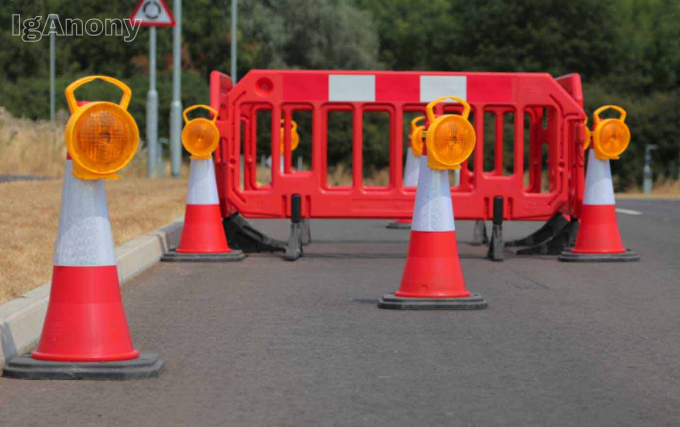Traffic management is an essential component of modern infrastructure, ensuring the smooth and safe flow of vehicles and pedestrians in both urban and rural environments. To facilitate this efficient circulation, the use of specialised traffic management equipment is paramount. This equipment ranges from basic cones and signage to sophisticated electronic systems that guide road users and provide real-time information.
The Fundamentals of Traffic Management Equipment
At the core of traffic management lies the goal of maximising safety and minimising congestion. The equipment employed must be durable, visible, and adaptable to a variety of scenarios. Barrier systems, traffic cones, and temporary signage are among the simplest forms of traffic management tools, providing clear direction and delineation in construction zones, event spaces, and incident sites.
Electronic Systems and Smart Devices
Advances in technology have led to the integration of electronic systems in traffic management. Variable message signs (VMS), for example, offer the flexibility to change warnings, directions, and information according to real-time needs. Similarly, traffic lights can be programmed to manage flow during peak hours or to give priority to public transport and emergency vehicles.
Choosing the Right Traffic Management Equipment
Selecting the appropriate equipment is critical in achieving effective traffic management. This requires an understanding of the specific demands of the site, whether it is a long-term infrastructure project or a temporary disruption. The choice of equipment should consider factors such as visibility requirements, durability against weather conditions, and the ease of deployment and removal.
Benefits of Professional Traffic Management
Collaboration with a reputable traffic control company can provide access to a comprehensive range of traffic management solutions. Such companies specialise in devising strategies that ensure safety and efficiency. They bring expertise in local regulations and often offer customised plans that fit the unique needs of their clients.
Training and Expertise in Traffic Management
Operatives handling traffic management must be adequately trained. This training not only involves the correct use of equipment but also encompasses risk assessment, understanding local laws, and the ability to react swiftly to changing circumstances.
Integration with Other Safety Measures
Effective traffic management is not limited to the deployment of physical equipment. It must be integrated with broader safety protocols, including coordination with emergency services, effective communication strategies, and public education campaigns. This ensures that road users are aware of and can respond appropriately to the control measures in place.
Customisation and Innovation in Traffic Management
Unique challenges call for custom solutions. Traffic management strategies may need to be tailored to accommodate special events, unpredictable weather conditions, or unusual traffic patterns. Innovations in equipment technology also contribute to more effective management, such as the use of drones for traffic monitoring and analysis.
Sustainability Considerations
Contemporary traffic management also needs to keep sustainability in mind. Equipment is increasingly being made from recycled materials and designed to be re-used or repurposed. Additionally, the sector is more conscious of the need to minimise the environmental impact of traffic disruptions, such as reduced idling times for vehicles leading to lower emissions.
Legal Compliance and Traffic Management
Adherence to legal requirements is another critical aspect of traffic management. Equipment needs to meet specified safety standards and potentially undergo regular inspections to verify compliance. Authorities often have stringent regulations governing the use of public spaces, and it is the responsibility of traffic management companies to ensure all criteria are met.
Maintenance and Storage of Equipment
Maintaining traffic management equipment is essential to its continued effectiveness. Regular checks and routine maintenance prevent failures that could lead to traffic delays or, worse, accidents. Proper storage practices also contribute to the longevity of the equipment, safeguarding the investment made in these vital assets.
Adapting to the Future of Traffic Management
The future of traffic management is likely to see even more technological integration. Intelligent transportation systems (ITS) are expected to play a significant role in how traffic is managed, particularly as autonomous vehicles become more prevalent. The equipment used in future traffic management strategies will need to communicate seamlessly with these advanced vehicles and transportation infrastructures.
Conclusion: The Importance of Specialised Equipment
Understanding the significance of traffic management equipment is fundamental for anyone involved in the planning, execution, and monitoring of traffic control systems. Its proper use not only ensures the seamless movement of traffic but also directly impacts the safety of road users and construction teams alike. As cities and road networks grow more complex, the demand for skilled traffic management specialists and high-quality equipment will only increase.
Whether for everyday use in managing flow in congested urban areas or for specific projects requiring careful coordination, traffic management equipment is a critical investment for those dedicated to maintaining order and safety on the roads. By partnering with experienced professionals and employing state-of-the-art equipment, communities and businesses can navigate the challenges of modern-day traffic with confidence and efficiency.







